You will need: a "9" key, brake fluid, a rubber or transparent hose, a transparent vessel.
USEFUL ADVICE: We recommend replacing the brake fluid with an assistant, having previously installed the car on a flyover or inspection ditch (no wheel removal required).
The sequence of fluid replacement in the brake mechanisms:
- rear right;
- front left;
- rear left;
- front right.
WARNING: Park the vehicle and place wheel chocks under the wheels ("shoes").
Do not reuse the drained fluid: it is contaminated, saturated with air and moisture. Always add only new fluid of the brand that was previously filled into the system.
Brake fluid is hygroscopic (absorbs moisture from the surrounding air), so it can not be stored in an open container.
Protect the environment! Do not pour used brake fluid into the soil or sewer system.
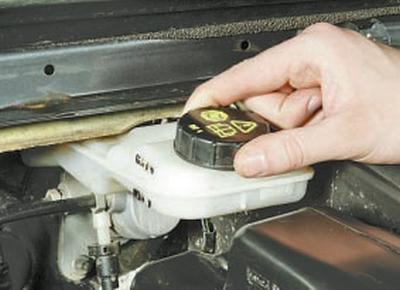
1. Unscrew..
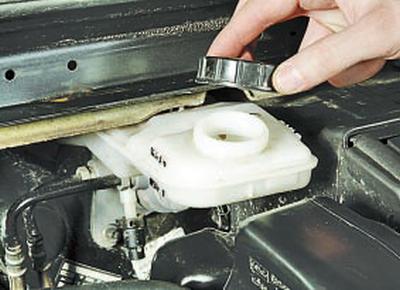
2.... and remove the cap of the reservoir of the main brake cylinder.
3. Use a medical syringe or a rubber bulb to pump out the old brake fluid from the reservoir.
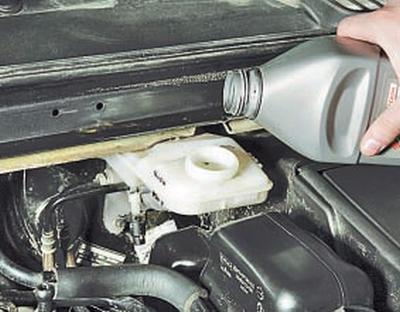
4. Add new brake fluid up to the lower edge of the filler neck.
5. Clean off dirt from the rear wheel air release valve.
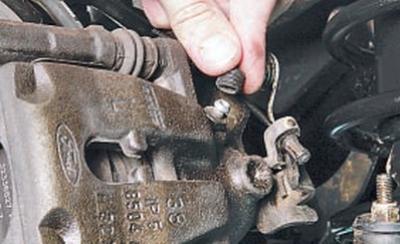
6. Remove the protective valve cap.
7. Attach the hose to the rear wheel brake slave cylinder bleed valve and immerse the other end of the hose in a clean, clear container.
8. The assistant should sharply press the brake pedal four to five times (with an interval between pressing 1–2 s), and then keep the pedal depressed.
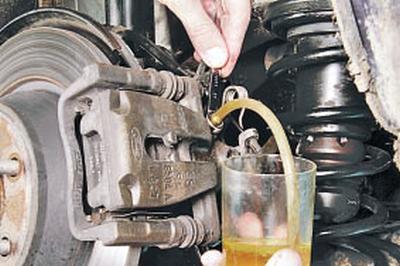
9. Loosen the air release valve 1/2-3/4 turn. The old one will start to flow out of the hose (dirty) brake fluid. The brake pedal should at this time smoothly reach the stop down. As soon as the fluid stops flowing, close the air release valve.
NOTE: Always keep an eye on the brake fluid level in the reservoir to prevent it from dropping below the "MIN" level on the reservoir wall. Top up with new brake fluid as needed to prevent air from entering the hydraulic drive. This ensures that the old liquid is gradually replaced by the new one without draining the hydraulic system.
10. Clean the front wheel air release valve of dirt.
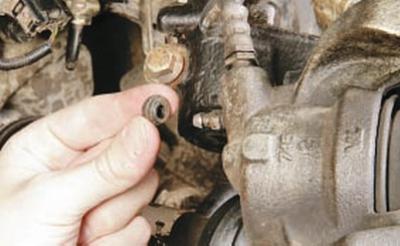
11. Remove the protective valve cap.
12. Attach the hose to the left front wheel brake slave cylinder bleed valve and immerse the other end of the hose in a clean, transparent container.
13. The assistant should sharply press the brake pedal four to five times (with an interval between pressing 1–2 s), and then keep the pedal depressed.

14. Loosen the air release valve 1/2-3/4 turn. The old one will start to flow out of the hose (dirty) brake fluid.
The brake pedal should at this time smoothly reach the stop down. As soon as the fluid stops flowing, close the air release valve.
15. Change the brake fluid in the secondary circuit (first in the working cylinder of the brake mechanism of the rear, and then the front wheel).
16. Repeat steps 9 and 14 until the fluid in the drive is completely changed (clear fluid without air bubbles should flow from the hose).
17. After changing the brake fluid, be sure to put protective caps on the air release valves to prevent corrosion.
Visitor comments